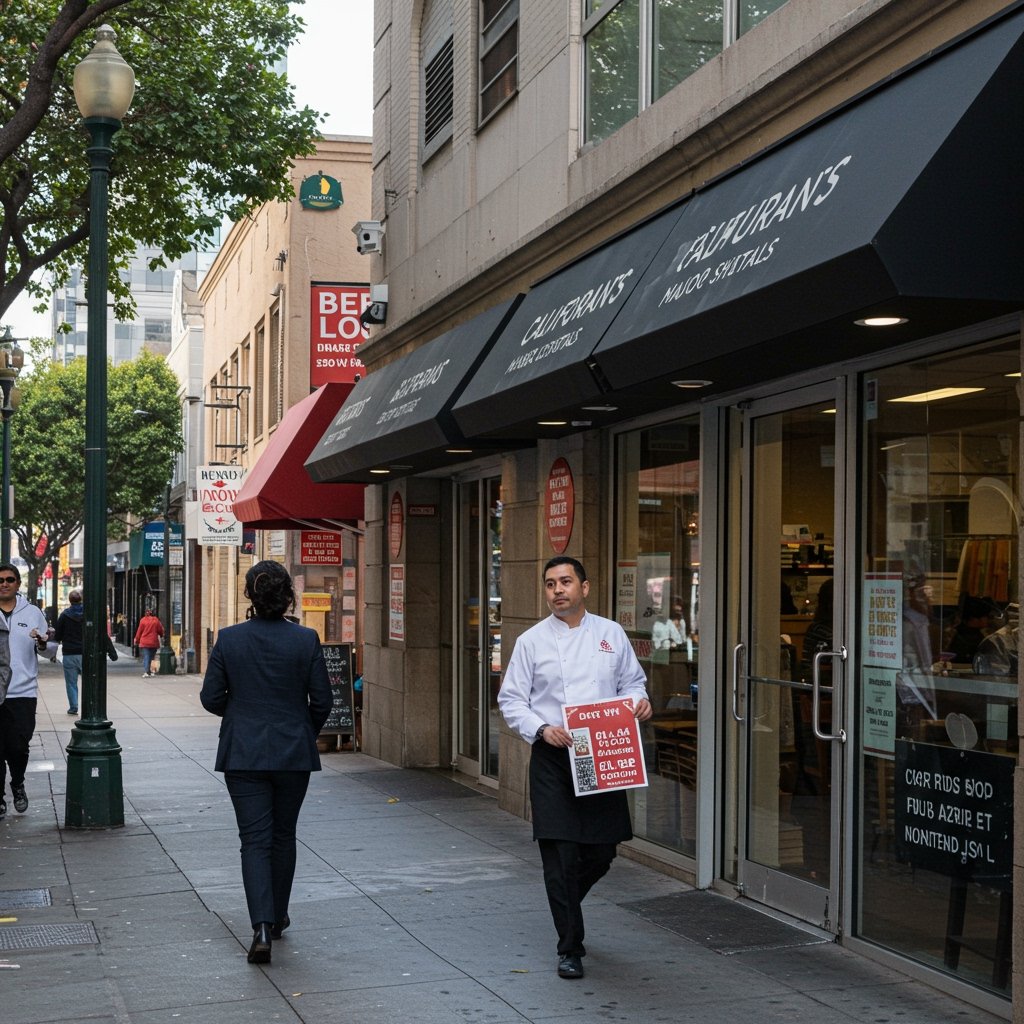California Restaurants Brace for AB 1234 Implementation on February 15, 2025
California’s vast restaurant industry is on high alert as a significant legislative shift looms. Effective February 15, 2025, Assembly Bill 1234, signed into law in late 2024, will dramatically alter the operational landscape for food service establishments across the state. The multifaceted law mandates a substantial increase in the minimum wage for non-tipped restaurant workers, alongside introducing new requirements aimed at improving working conditions and stability for employees. This impending deadline has sparked considerable debate and preparation within the industry, with stakeholders expressing a wide range of reactions, from cautious optimism among labor advocates to significant concern from business owners and industry groups.
Key Provisions of AB 1234 Detailed
The cornerstone of AB 1234 is the mandated wage increase. Starting February 15, 2025, the minimum hourly wage for non-tipped employees in California restaurants will rise by a flat $2.00. This specific increase targets roles that do not primarily rely on gratuities for their income, such as kitchen staff (cooks, dishwashers), hosts, bussers (depending on tip pooling structures), and potentially some counter service positions. This change is designed to provide a more stable and higher income floor for a significant segment of the state’s estimated 1.4 million food service workers who may not benefit substantially from customer tips.
Beyond the direct wage hike, AB 1234 introduces two other critical components. Firstly, it establishes new requirements for employers regarding predictable scheduling. While the precise details of these regulations will become clearer as implementation guidelines are finalized, the intent is to provide workers with more stable and predictable work schedules, reducing uncertainty often associated with hourly employment in the service sector. This aims to allow employees better ability to manage personal lives, childcare, and potentially hold second jobs without last-minute schedule changes.
Secondly, the law mandates improved access to benefits for employees working over 30 hours per week. This provision seeks to bring a larger portion of the restaurant workforce closer to the benefits packages often associated with full-time employment in other industries, potentially including health insurance, paid sick leave beyond minimum state requirements, or retirement plan access, depending on the specific mechanisms established by the bill’s implementation framework. This aspect is particularly impactful for employees who consistently work near full-time hours but may have previously been classified or treated in a manner that limited their access to comprehensive benefits.
Industry Reaction: Concerns and Adaptations
Representatives from the restaurant industry have been vocal about their anxieties regarding the rapid implementation and the comprehensive nature of AB 1234. The California Restaurant Association (CRA) has been at the forefront of voicing these concerns. Their primary worry centers on the potential impacts on small businesses, many of which operate on thin margins. A sudden $2.00 per hour increase per employee, coupled with the administrative complexities and potential costs associated with predictable scheduling and expanded benefits access, represents a significant added financial burden that could challenge the viability of independent and smaller establishments.
The CRA and others have also warned that these increased labor costs will inevitably lead to higher operating expenses, which will likely be passed on to consumers in the form of increased menu prices. While some price adjustments are standard in the industry, a widespread, potentially significant surge in prices could affect consumer demand, further squeezing businesses already grappling with higher costs.
Another predicted outcome, particularly among economic analysts and larger chain operators, is the potential for AB 1234 to accelerate the adoption of automation technology. Facing higher labor costs, larger restaurant chains with the capital to invest may look towards automated systems for tasks like ordering, food preparation, or delivery handling to offset the expense of human labor. This could have long-term implications for the structure of the restaurant workforce, potentially reducing the number of entry-level positions available.
Labor Advocates Hail Progress
In stark contrast to the industry’s trepidation, labor advocates have lauded AB 1234 as a landmark achievement. They view the legislation as a crucial step towards improving conditions for the state’s vast food service workforce. For years, advocates have highlighted the challenges faced by these workers, including low wages, unpredictable hours, and limited access to essential benefits. The $2.00 wage increase is seen not just as a modest bump, but as a vital move towards a living wage in California’s expensive economic climate.
The predictable scheduling requirement is celebrated as a measure that will finally provide workers with the stability needed to plan their lives, reduce stress, and potentially improve work-life balance. Furthermore, expanding benefit access to those working over 30 hours per week is viewed as a fundamental recognition of their commitment and contribution, moving them closer to the standard protections and advantages enjoyed by workers in other sectors.
For the 1.4 million food service workers in California, AB 1234 represents tangible progress after years of advocacy. Labor groups emphasize that the law will not only provide financial relief but also enhance job quality and security, potentially leading to improved morale, reduced turnover in some areas, and a more professionalized workforce.
Economic Outcomes and Adaptation
Economic analysts are predicting varied outcomes across the diverse California restaurant landscape. While larger chains may have the resources to absorb costs or invest in automation, smaller, independent restaurants may face tougher choices, including significant price increases, reduced staffing, or potentially closure in the most challenging cases. The impact is expected to differ based on location, customer base elasticity, and the specific operational model of each establishment.
Restaurants are currently in a crucial period of planning and adaptation. This involves revising financial models and budgets to accommodate higher wage expenses and potential benefit costs. It also necessitates reviewing staffing schedules and potentially investing in new payroll and scheduling software to comply with the predictable scheduling requirements. Communicating these changes effectively to both employees and customers will be key to navigating the transition.
As February 15, 2025, approaches, the California restaurant industry is steeling itself for a significant transformation brought about by AB 1234. The coming months will be critical for businesses to finalize their strategies for implementation, balancing the new legal requirements with the need to remain economically viable. Meanwhile, workers anticipate the tangible benefits that the new law promises to deliver, marking a new chapter for labor standards in the state’s food service sector.


















